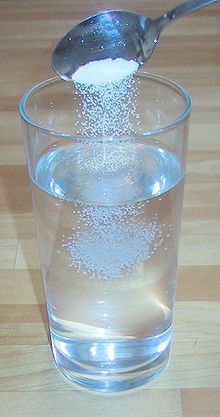solution

A solution being made of salt in water.
A solution is a homogeneous molecular mixture of two or more substances of dissimilar molecular structure. The term is commonly applied to solutions of solids in liquids. Other types of solutions include gases in liquids, the solubility of gases decreasing with rise in temperature; gases in solids; liquids in liquids; and solids in solids, e.g., some alloys, (see solid solution).
The liquid component is usually termed the solvent, the other component, which is dissolved in it, the solute. The solubility of a solute in a given solvent is usually stated as the mass which will dissolve in 100 g of the solvent to give a saturated solution (see saturation). Solubility generally increases with temperature. For slightly soluble ionic compounds (see ionic bond), the solubility product – the product of the individual ionic solubilities – is a constant at a given temperature.
Most substances are solvated when dissolved: that is, their molecules become surrounded by solvent molecules acting as ligands. Ionic crystals dissolve to give individual solvated ions, and some good solvents of high dielectric constant (such as water) cause certain covalent compounds to ionize, wholly or partly (see also acid).
Analogous to ideal gas, the hypothetical ideal solution is one which is formed from its components without change in total volume or internal energy: it obeys Raoult's law and its corollaries, so that the addition of solute produces a lowering of the freezing point, elevation of the boiling point, and increase in osmotic pressure (see osmosis), all proportional to the number of moles added.


